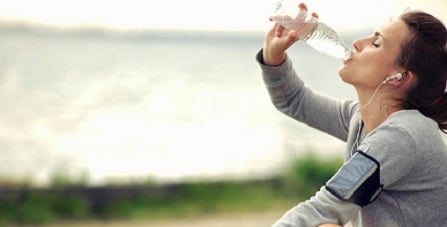
We’re often told we should drink two, maybe even as much as three litres of water a day for our health. But is that right?
The reality is, there’s just one simple rule that all health authorities, including Kidney Health Australia, agree on; drink to satisfy your thirst – no more, no less.
Adelaide-based urogynaecologist Dr Ian Tucker, an advisor to the Continence Foundation of Australia, says there is no scientific evidence to suggest drinking more water than that required to satisfy our thirst has any health benefits. In fact, excessive fluid intake can be dangerous if taken to extremes, he says.
So how much should we drink? It’s a simple case of arithmetic; we need to take in enough to make up for the amount we lose each day, which is around two litres (1.5 litres as urine and 0.5 litres as perspiration and water vapour).
We actually consume about one litre of water through our food (based on a normal diet of fruit, vegetables, cereal etc.), so that leaves only about one litre to make up – roughly six small glasses.
There are exceptions; you need to drink more on hot days or when exercising, but even then, you should still be making about 1.5 litres of urine a day.
Dr Tucker’s recommendations are backed by Kidney Health Australia. For more information you can view their factsheet Drink Water Instead.
Another way to tell if you’re drinking enough is to check the colour of your urine, which should be pale lemon.
Any liquids, including tea and coffee, are suitable for hydration, Dr Tucker says, with alcohol, a diuretic, the only exception. He also warns against too many fizzy or caffeine-based drinks, which can trigger urge incontinence in people with bladder dysfunction.
Anyone with incontinence issues can phone the free, confidential National Continence Helpline (1800 33 00 66), which is staffed by continence health nurses 8am to 8pm weekdays (AEST).
Note:
1. Excessive urine output (polyuria), which leads to excessive thirst, may be an indication of diabetes.
2. Older people may not get strong thirsty signals from the brain, putting them at risk of dehydration.

